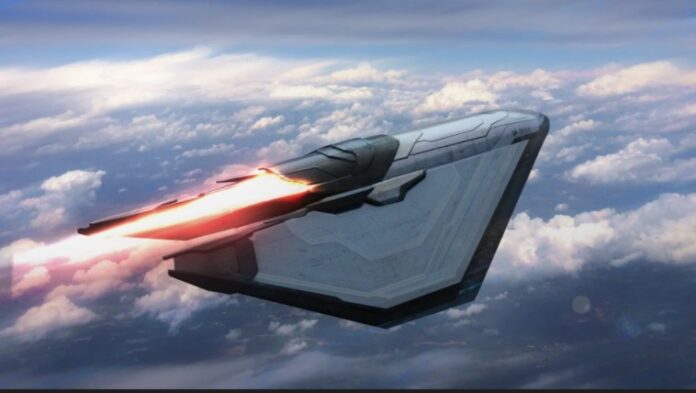On Venus Aerospace’s home page it asks the question, “how much would you pay to get to the other side of the world in comfort in an hour?” My response is, “I don’t know but if it were a small premium over current commercial air travel, I’d be interested.” On the website, it doesn’t list a future price for what Venus Aerospace plans to offer.
Venus Aerospace claims that no one has built an engine to make one-hour global transport cost-effective. This gave me pause since I have been writing about SpaceX’s plans to offer a suborbital rocket point-to-point travel service for several years since announcing the Starship (formerly the BFR). The differences are interesting. SpaceX wants to use rockets. Venus Aerospace wants to use a spaceplane.
Venus Aerospace is Houston, Texas-based. In the last week, it made headlines revealing it had raised $20 million US in funding for its zero-carbon emission spaceplane featuring next-generation rocket engine technology, an innovative aircraft shape (see image above), and a design that would allow it to takeoff and land using existing airports.
The Difference between Hypersonic and Supersonic
Supersonic refers to being able to travel faster than the speed of sound travelling through the atmosphere at sea level which is 1,235 kilometers (767 miles) per hour in temperature conditions of 20 Celsius (68 Fahrenheit).
The first aircraft to surpass the speed of sound was the rocket plane known as the Bell X-1 which flew in 1946. Since then surpassing the speed of sound, known as Mach 1, has become common for military aircraft, but not commercial airplanes with the exception of the European Concorde.
NASA, currently, is building a supersonic commercial demonstrator aircraft that follows in the footsteps of the Concorde that flew from 1976 to 2003. The Concorde could attain speeds of better than Mach 2 (twice the speed of sound) and carry up to 128 passengers. It was restricted from flying at supersonic speeds when over land because of the sonic boom it created as it passed. I remember being in Reston, Virginia, the first time I witnessed the Concorde as it flew into Washington, DC. Even at subsonic speeds it was a pretty noisy plane.
In reviving the idea of supersonic flight, NASA’s X-59 QueSST is designed with what the Agency calls quiet supersonic technology, which means a much reduced sonic boom. Testing is to begin later this year over select overland routes to gauge consumer acceptance.
Hypersonic is supersonic on steroids. Instead of Mach 2, hypersonic aircraft fly at speeds greater than Mach 5. The U.S. Airforce’s experimental X-15 was the first spaceplane to achieve hypersonic speeds. It flew in the 1960s and was air-launched strapped to a B-52 bomber and used a rocket engine. The Space Shuttle during re-entry achieved hypersonic speeds.
Now Venus Aerospace wants to achieve hypersonic speeds using its unique technological innovations allowing it to fly at speeds of up to Mach 9 (over 11,000 kilometres or more than 6,900 miles per hour) at altitudes exceeding 51 kilometres (over 32 miles). Its hypersonic spaceplane would take off from airports like a conventional jet. But once over water, the rocket would fire taking passengers not quite to the edge of space and not to a level where weightlessness would be experienced.
Venus co-founder and CEO, Sassi Duggleby, stated in a radio interview this week some of the benefits of hypersonic flight. Duggleby served as a systems engineer at Virgin Orbit, Sir Richard Branson’s company.
Besides flying across the Pacific in an hour for a meeting and returning in time for dinner at home, Duggleby points out: “If a factory is down and needs a part, you could literally have it anywhere in the world in an hour…Even global organ transport suddenly opens up to the market.”
When will Duggleby’s hypersonic plane fly? Ten years from now.
In a TED Talk with Gwynne Shotwell, COO and President of SpaceX, in 2018, she told an eager audience that her company plans to offer interplanetary point-to-point rocket travel to anywhere on the planet in 30 minutes. At the time, SpaceX was beginning to develop the Starship. To deal with the noise issue, SpaceX planned to launch its Starships from offshore platforms with a fleet of rapidly reusable rockets capable of moving passengers and freight.
SpaceX has built the Starship not just for sub-orbital use. It is the platform upon which they are building a fleet of orbital and Deep Space vehicles including a lunar lander for the first NASA Artemis return-to-the-moon missions.
It should be noted that Venus Aerospace isn’t the only company seeking to offer hypersonic commercial flight. Hermeus Aerospace, an Atlanta, Georgia-based company has plans to launch its own hypersonic aircraft by 2029. Another company, Florida-based IO Aircraft, features on its website a number of hypersonic models including business and commercial passenger aircraft. And Russia, China and the US Airforce are working on hypersonic scramjets as weapon and reconnaissance systems.
















